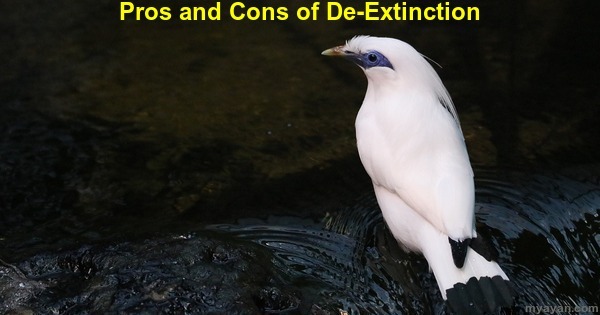If you have been following the news, you may have heard about de-extinction, the process of bringing extinct species back to life. While it may sound like a scene from Jurassic Park, scientists are actually working on making this a reality. De-extinction has gained both excitement and criticism, with people divided on its potential benefits and drawbacks. This article explores the pros and cons of de-extinction, giving you a better understanding of this controversial topic.
The prominent pros of de-extinction include:
One of the primary benefits of de-extinction is that it could help boost biodiversity. By bringing back extinct species, we can bring back lost genes and allow ecosystems to thrive, which can have a positive impact on the environment. For example, the woolly mammoth, which went extinct over 4,000 years ago, could help prevent permafrost thawing in the Arctic, which could have a positive impact on climate change.
De-extinction technology could push scientific boundaries. It could help us gain a better understanding of genetics and cloning, which could lead to groundbreaking advancements in other industries.
De-extinction could help protect currently endangered species. By bringing back certain traits from extinct species, we could strengthen the gene pool of current populations, helping them adapt to changing environments.
Some argue that it is our moral responsibility to bring back species that we have driven to extinction. By doing so, we can right the wrongs of the past and prevent future extinctions.
De-extinction could also have economic benefits. It could attract tourists, generate revenue from conservation efforts, and bring back valuable species that can be used for agriculture or other industries.
Some of the main drawbacks of de-extinction include
The process of de-extinction is incredibly expensive and requires a significant amount of resources. This could potentially divert funding and resources away from other important conservation efforts.
While some argue that it is our moral responsibility to bring back extinct species, others believe that it goes against the natural order of things. It could also raise concerns about playing "God" and the potential consequences of altering ecosystems.
Bringing back extinct species could also pose legal challenges. Who would be responsible for these animals? Would they have the same rights and protections as other species? These are all important questions that need to be addressed before moving forward with de-extinction.
Bringing back extinct species could potentially disrupt existing ecosystems. These animals were originally driven to extinction for a reason, and reintroducing them could have unintended consequences on other species and the environment as a whole.
Despite recent advancements in de-extinction technology, there are still many limitations and uncertainties. The success rate of cloning and genetic engineering is not 100%, so there is no guarantee that de-extinct animals will survive or thrive in their new environment.
De-extinction is a complex issue with both pros and cons, the outcome of which remains to be seen. On the one hand, bringing back extinct species can help restore ecosystems, advance our understanding of genetics, and strengthen the gene pools of other species.
On the other hand, it raises ethical concerns, requires significant financial resources, and may have unforeseen consequences on the environment. Ultimately, we must weigh these pros and cons and determine whether de-extinction is worth the risk. It is important to continue researching the process of de-extinction and respect ethical considerations to preserve the intrinsic value of biodiversity and maintain the balance of nature.

The primary argument against de-extinction arises from the perspective of conservation biology. Prioritizing de-extinction may undermine biodiversity by diverting resources away from the preservation of ecosystems and prevention of future extinctions.
As species become extinct, they are removed from the food chain, resulting in a ripple effect. Animals that rely on the now-extinct species for sustenance must adapt and find alternative food sources or face starvation. This disruption can have detrimental consequences on the populations of other plants and animals. Additionally, the absence of a predator can lead to an unchecked proliferation of its prey, causing an imbalance in local ecosystems.
De-extinction presents a unique chance for humanity to right the wrongs it has inflicted upon other species in the past while also promoting the enrichment of species diversity.
The primary argument against de-extinction originates from the perspective of conservation biology. By prioritizing de-extinction efforts, there is a concern that it may undermine biodiversity conservation by redirecting resources away from ecosystem preservation and preventing future extinctions.